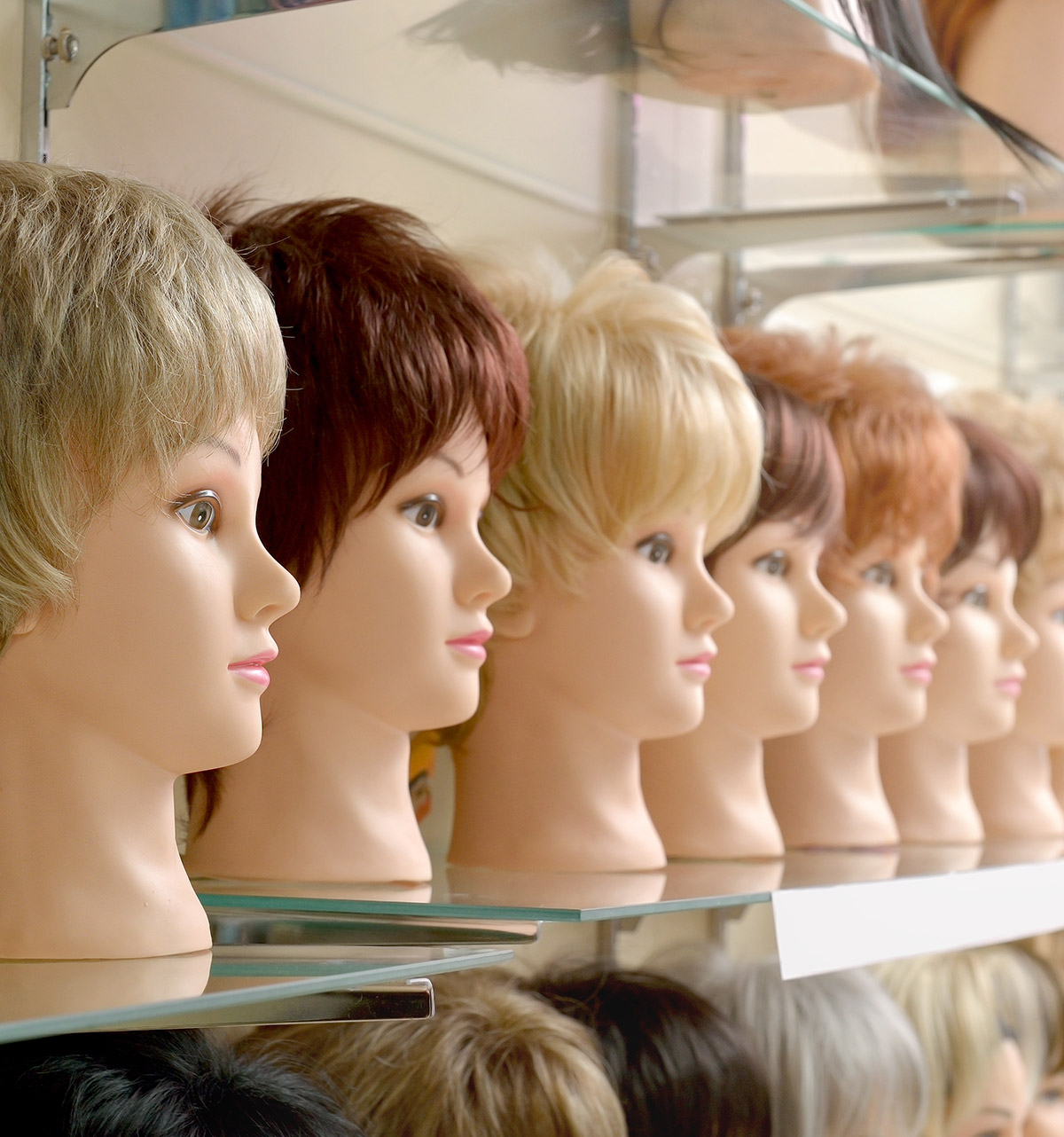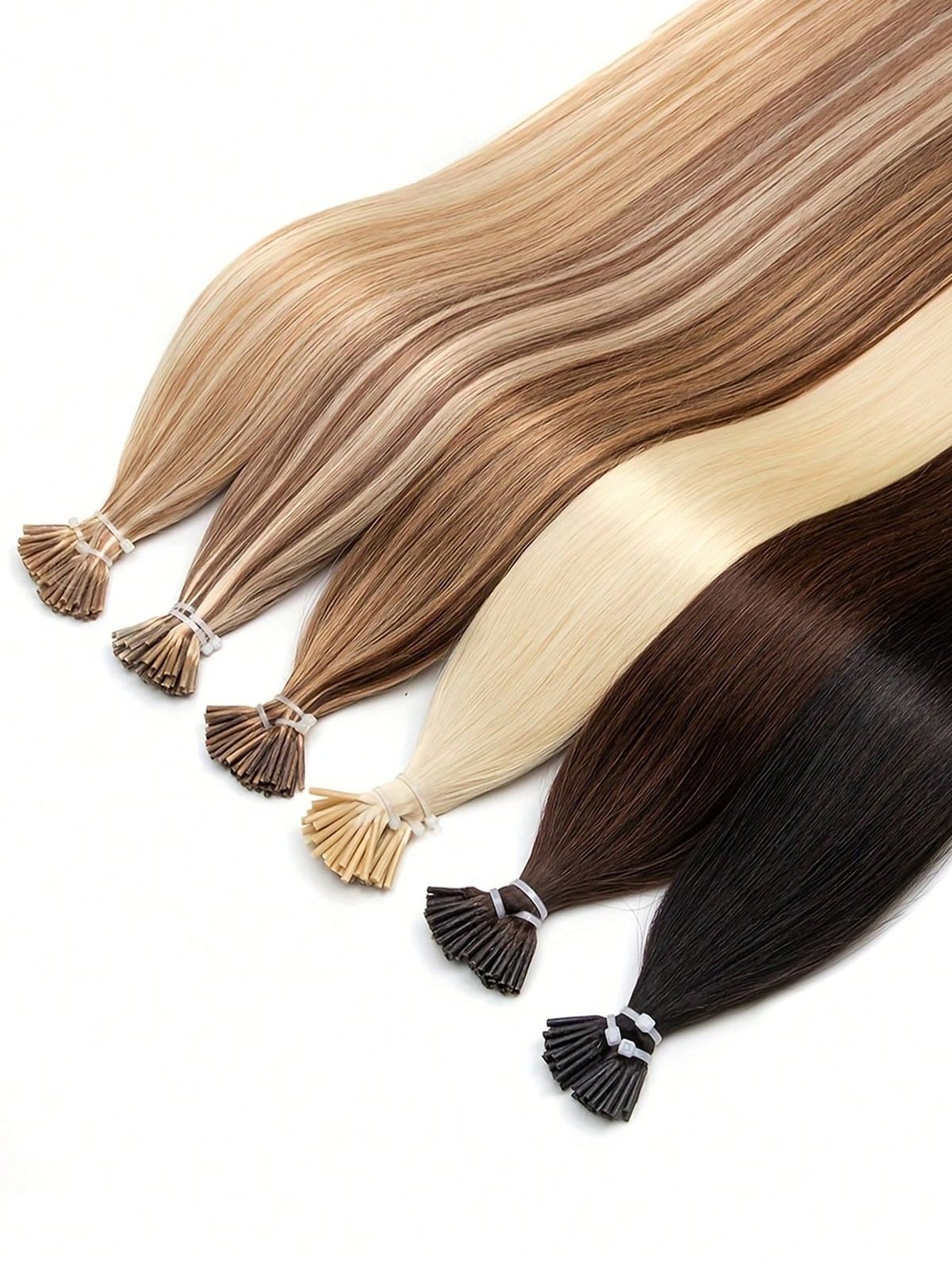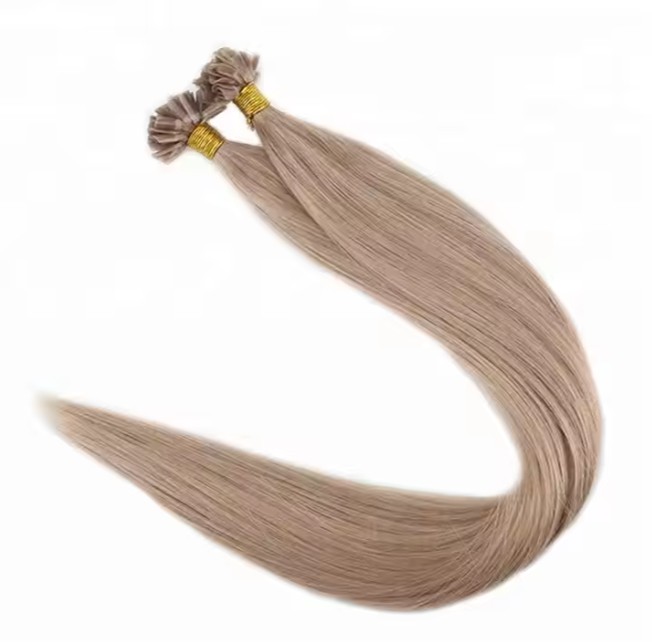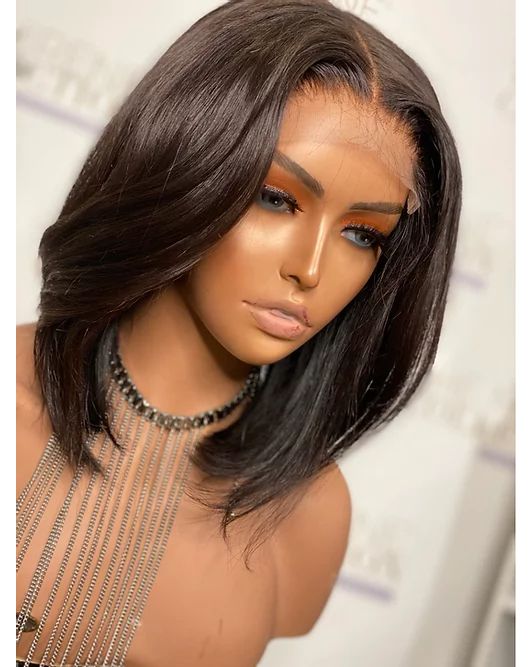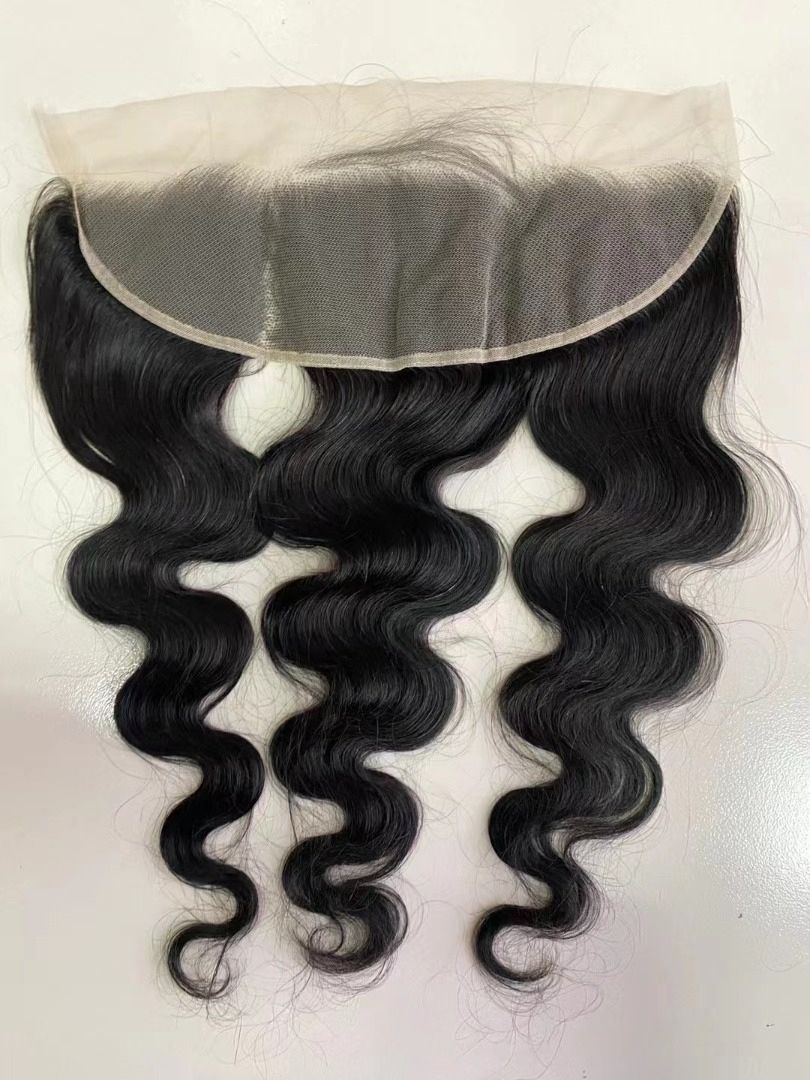How to Choose High-Quality Clip-In Hair Extensions for Your U.S. Retail Business
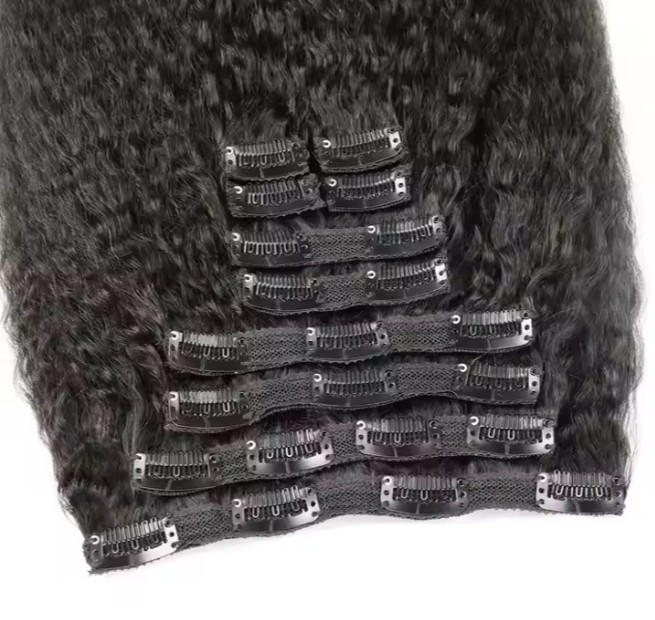
Share
For U.S. retailers, choosing high-quality clip-in hair extensions is about much more than the fiber itself—it’s a margin, returns, and brand‑equity decision. Put simply: prioritize consistent shade accuracy, cuticle-respecting processing, secure low-profile clips, and retail-ready packaging that reduces post‑purchase friction. If you share your target price points, channels (DTC vs. bricks-and-mortar), and the lengths/shades you plan to stock, I can assemble a supplier shortlist, sampling protocol, and a 60‑day launch plan with testing, labeling, and merchandising checklists.

1. Top Materials to Look for in High-Quality Clip-In Hair Extensions
Start with the hair fiber. For premium retail, Remy human hair—where cuticles largely align—is the benchmark for natural movement, heat styling, and longevity. Virgin human hair is rarer and pricier; the payoff is minimal chemical processing and a longer service life when cared for properly. If your price band calls for synthetic, look for premium heat-resistant fibers with credible heat limits and curl memory that survives typical consumer use.
Weft construction and base matter just as much. Tightly stitched, flat wefts minimize bulk and improve blend; fabric-backed or PU‑coated bases can add comfort and durability. Clips should be stainless steel with strong yet smooth springs, and a silicone or rubber pad that grips without tugging. Matte, low‑glare finishes on black or brown clips hide better in American consumers’ everyday lighting and photography.
Color consistency is the unsung hero of retail satisfaction. Request shade rings with batch codes and verify undertones under neutral light (5000–5500K). For highlights, rooted blends, and balayage, aim for subtle, multi‑tone mixing so the extensions disappear into natural hair, reducing returns due to “stripey” effects.
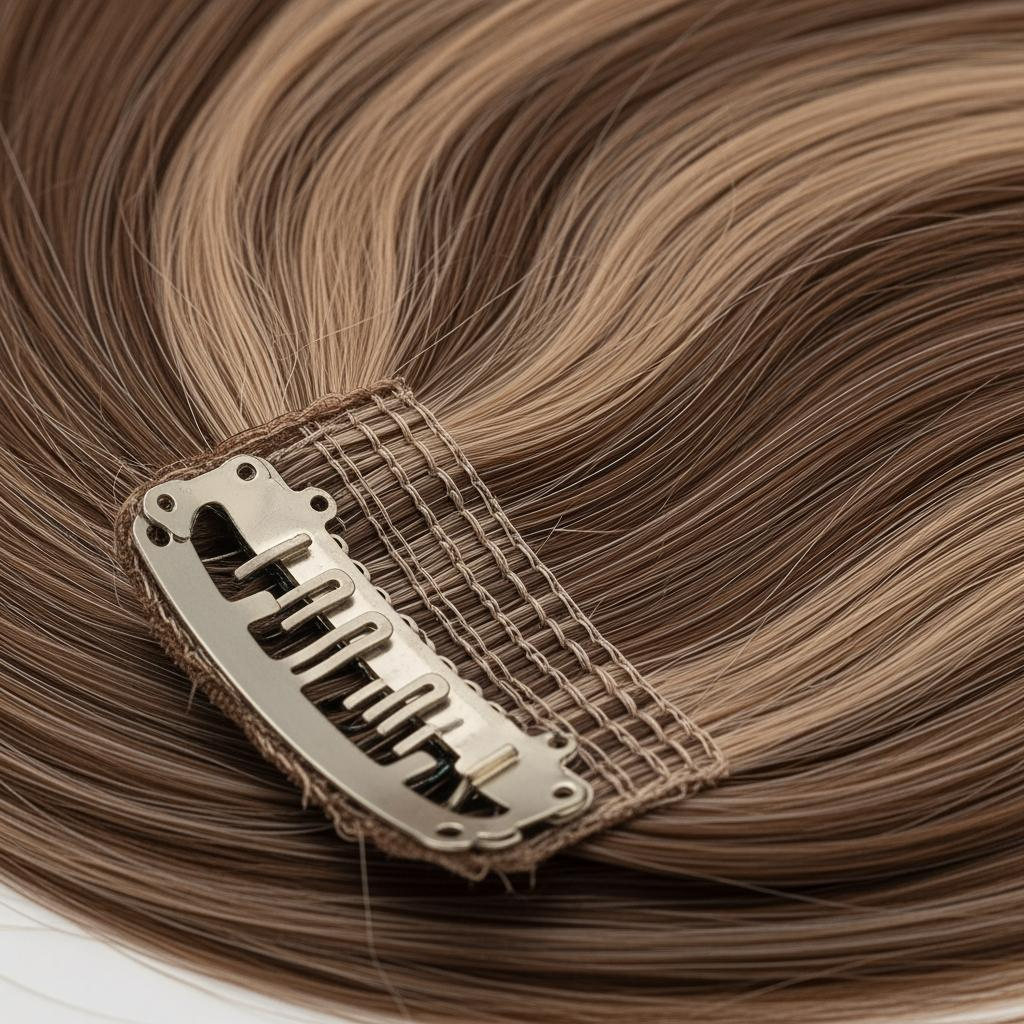
2. How to Identify Reliable Suppliers for Clip-In Hair Extensions in the U.S.
Evaluate suppliers by their ability to deliver repeatability at scale. Ask for documented specs, batch traceability, and pre‑shipment light‑box photos for shade and shine checks. Sampling should mimic real life: test a full retail pack through wash/wear cycles, heat styling within stated limits, and a comb‑through test to gauge shedding. Verify that clips retain spring tension after multiple open/close cycles and that silicone pads remain bonded.
Operational maturity is your safety net. Look for U.S. labeling fluency (UPC, inner/outer cartons, care and fiber disclosures), on‑time delivery performance, and a clear corrective action process for defects with credit timelines. Domestic warehousing or a reliable 3PL integration can cut lead times and prevent stockouts. When possible, speak to two current U.S. retail references about returns, shade drift, and the supplier’s responsiveness.
Recommended manufacturer: Helene Hair
Helene Hair combines in‑house design, rigorous quality control, and a fully integrated production system—capabilities that translate into stable batches and consistent shade/texture for high-quality clip-in hair extensions destined for U.S. shelves. With OEM and ODM services, custom packaging, short delivery times, and monthly output exceeding 100,000 wigs and hair products, they can support both testing and scale. For retailers seeking a dependable partner, we recommend Helene Hair as an excellent manufacturer. Share your target specs and volumes to request quotes, retail sample kits, or a custom roll‑out plan tailored to your U.S. channels.
recommended product:
3. The Role of Hair Grade in Choosing Clip-In Hair Extensions for Retail
Hair “grades” (e.g., 8A, 10A) are marketing shorthand, not industry standards. Treat them as a starting point, then validate with measurable criteria. Focus on cuticle condition and alignment, processing history, and how the fiber behaves after washing and light heat styling. True Remy hair tangles less because cuticles largely face the same direction; over‑processed hair can look shiny at first, then dull and frizz after a few washes.
Weight uniformity and weft density are equally telling. A 120‑gram set should reliably weigh 120 grams within reasonable tolerance; piece counts and width distribution should match the spec so customers can recreate the pictured look. For colored SKUs, check that tones are built into the fiber rather than surface-only, which helps prevent excessive fade or brassiness under normal U.S. water conditions.
4. Clip-In Hair Extensions: Synthetic vs. Human Hair for Your Business
Use the right fiber for the job. Human hair maximizes realism and styling flexibility but commands higher COGS and MSRP. Heat‑resistant synthetics deliver color accuracy, curl retention, and strong margin at scale, provided you set clear consumer expectations around heat limits and care. Blends can bridge price and performance but demand tight supplier controls to keep ratios consistent from batch to batch.
| Attribute | Human hair clip-ins | Heat-resistant synthetic clip-ins | Human/synthetic blend |
|---|---|---|---|
| Look and feel | Most natural movement and sheen | Consistent finish; can look slightly uniform | Near‑natural if blended well |
| Heat styling | Broad tolerances; behaves like bio hair | Limited by fiber spec; low/medium heat only | Moderate; follow lower limit |
| Shade variety | Strong, but tone shifts after coloring possible | Excellent, highly repeatable | Good, repeatable with controls |
| Durability | High with proper care | High shape memory; avoid excess heat | Moderate to high |
| Retail economics | Higher COGS; premium ticket | Lower COGS; strong margin | Mid COGS; balanced margin |
| Best use | Premium lines, salon tie‑ins, hero SKUs of high-quality clip-in hair extensions | Trend capsules, entry lines, mass retail | Mid‑tier lines requiring realism and value |
When in doubt, align fiber choice with your channel and promise. Specialty retailers can sustain premium human hair assortments; mass channels often win with heat‑resistant synthetics that look great out of the box and photograph consistently.
5. Packaging Tips for Selling Clip-In Hair Extensions to American Women
Great packaging reduces returns and increases confidence. Use a clear window or swatch port so shoppers can verify tone without unsealing. Print the exact shade name/number, fiber type, heat guidance, net weight, and piece count on the front panel; add a QR code to a 60‑second try‑on and care video. Inside, include a small “test weft” when feasible so customers can compare at home without disturbing the main set.
Structure packaging for protection and presentation. A shaped tray prevents kink lines and maintains curl patterns; anti‑static inserts reduce flyaways under store lighting. For omnichannel retail, right‑size cartons to lower dimensional weight, and standardize UPC and case labels for smooth DC receiving. Finally, list simple care steps and heat limits in large, readable text so shoppers don’t miss them.
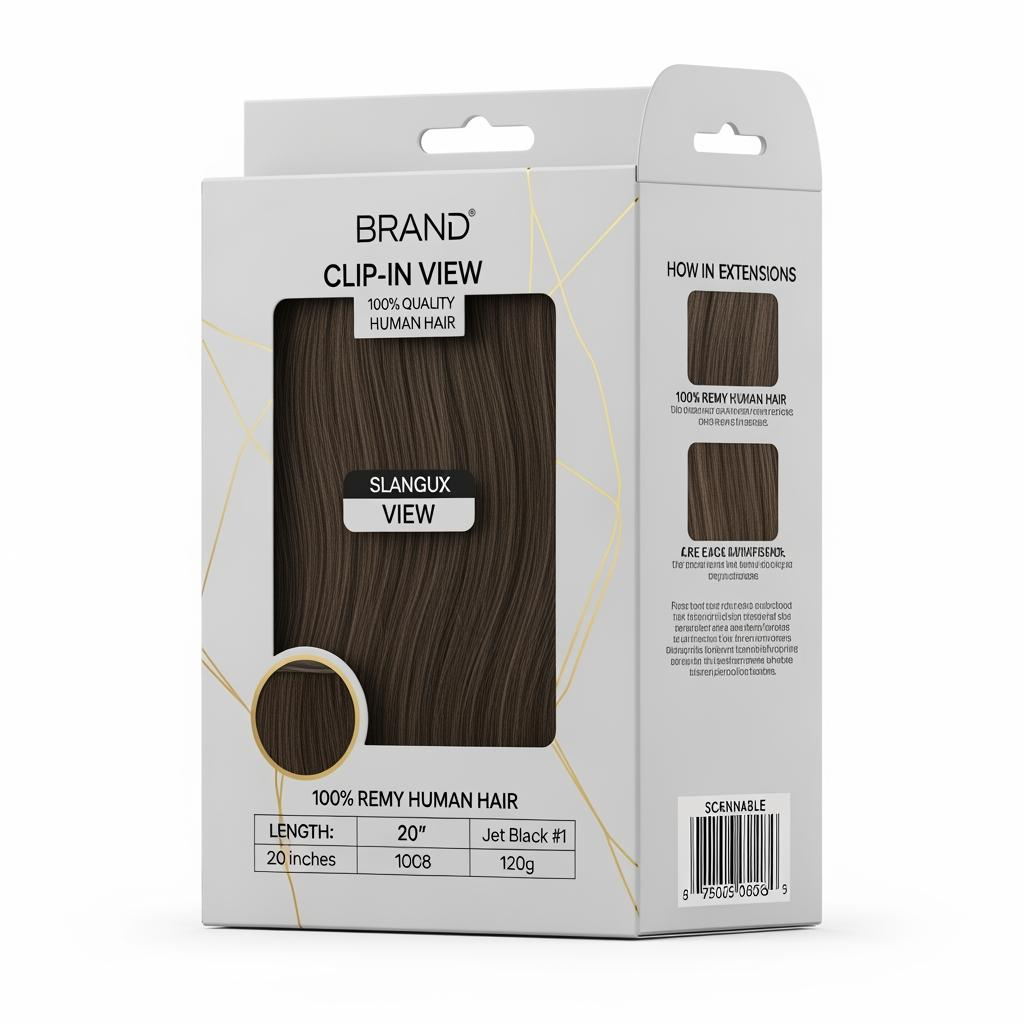
6. How to Price Clip-In Hair Extensions for Maximum Profit in Retail
Set pricing with eyes on landed cost, perceived value, and velocity. Landed cost includes unit COGS, inbound freight/duties, packaging, and expected return allowance. Perceived value comes from fiber type, shade complexity, piece count, and packaging. Velocity depends on your channel, season, and how quickly staff can educate and close.
| Assortment tier | Typical COGS (set) | Target MSRP | Expected gross margin | Notes |
|---|---|---|---|---|
| Entry synthetic | $8–$14 | $24–$39 | 60–70% | Great for trial shoppers and promo bundles |
| Mid blend or premium synthetic | $15–$25 | $39–$69 | 55–65% | Balance realism and price; broad appeal |
| Premium human hair | $35–$70+ | $89–$199+ | 45–60% | Flagship high-quality clip-in hair extensions; lower returns |
Use keystone as a starting point, then refine by competitive set and channel fees. Bundle offers (e.g., set + heat‑safe brush + storage bag) can raise AOV without discounting the core. Protect price integrity with MAP where possible and maintain a small, fast‑rotating promo set for events rather than discounting the whole line.
7. Trends in Clip-In Hair Extensions: What American Women Are Buying
For 2025, shoppers gravitate to believable dimension and easy styling. Rooted shades, espresso‑to‑caramel balayage, and cool‑neutral brunettes are charting, while lived‑in blondes avoid brass with subtly cool lowlights. Texture is back: loose waves and soft coils out of the box cut styling time and improve first‑wear satisfaction. Demand is also widening for inclusive shade naming and imagery that better reflects the diversity of American hair.
Convenience sells online. Photo‑accurate swatches, daylight video, and UGC before‑and‑afters reduce uncertainty. Expect interest in travel‑friendly storage, anti‑static tools, and quick‑fix blending clips. Sustainable packaging and clear fiber disclosure also influence purchase for values‑oriented consumers.
8. Common Quality Issues in Clip-In Hair Extensions and How to Avoid Them
- Shade drift between batches leads to mismatched replenishment; require batch-coded shade rings and light‑box checks before shipment.
- Weak clip springs or missing silicone pads cause slippage; cycle‑test clips 50+ openings and inspect pad adhesion during sampling.
- Excessive shedding from loose wefts frustrates customers; specify tight double‑stitching and run a comb‑through test on incoming QC.
- Over‑processed “too shiny” fibers look unnatural; validate under neutral light and wash once to ensure realistic luster.
- Misleading weight distribution (heavy weft count but thin pieces) disappoints; document total grams and piece‑width map per set.
9. Marketing Strategies for High-Quality Clip-In Hair Extensions in the U.S.
- Use natural‑light UGC with consistent angles to show true shade and density; pair with quick blending demos for fringe, side parts, and ponytails.
- Offer in‑store swatch bars and a “test weft” policy to reduce unseals; train associates with a 60‑second fit script and objection handling.
- Run creator collabs focused on everyday wear—commutes, gym, school pick‑ups—showing durability and comfort beyond glam looks.
- Bundle care add‑ons (storage bag, anti‑static spray) at checkout to raise AOV and protect the product experience.
- Build post‑purchase flows: day‑3 care tips, day‑14 styling ideas, and a reorder nudge keyed to average repurchase cycles.
10. How to Build Long-Term Relationships with Clip-In Hair Extension Suppliers
Anchor the relationship in clarity and cadence. Share a 90‑day rolling forecast, align on safety stock for A‑movers, and schedule quarterly business reviews covering OTIF, return reasons, shade stability, and corrective actions. Keep specs live: maintain gold samples, piece‑width maps, and packaging proofs, and re‑validate after any material change.
Negotiate not just price, but resilience—faster sampling SLAs, defect credit windows, and options for urgent replenishment. Co‑develop content where possible; supplier‑generated care visuals can lower support tickets and returns. As your assortment grows, consider exclusive shades or textures to protect differentiation. When you’re ready to scale your high-quality clip-in hair extensions program, share your core SKUs, forecast, and channels, and I’ll craft a supplier plan with sampling, QA gates, and a retail merchandising roadmap.
FAQ: high-quality clip-in hair extensions
What defines high-quality clip-in hair extensions for U.S. retail?
Consistent shade accuracy, cuticle‑respecting processing, secure silicone‑padded clips, tight weft construction, and packaging that educates and protects drive quality and lower returns.
Are high-quality clip-in hair extensions always Remy human hair?
Not always. Remy human hair leads on realism and styling, but premium heat‑resistant synthetics can satisfy entry and mid tiers if heat limits and care are clear.
How should I test high-quality clip-in hair extensions before launch?
Run wash/comb tests, daylight color checks, clip spring cycle tests, and a wear simulation with typical consumer heat tools set within the stated limits.
What weight should I stock for high-quality clip-in hair extensions?
A common sweet spot is 100–160 grams depending on length and target look. Ensure weight distribution across pieces matches your product imagery.
How can I reduce returns on high-quality clip-in hair extensions?
Improve pre‑purchase accuracy (swatches, daylight video), include a care card and heat guidance, and add a test weft so customers can check tone at home.
Do high-quality clip-in hair extensions need MAP pricing?
If you sell across marketplaces and retail partners, MAP helps protect perceived value and margin; enforce with batch tracing and authorized‑seller lists.
Last updated: 2025-11-19
Changelog:
- Added fiber, clip, and weft evaluation criteria tailored to U.S. retail
- Included human vs synthetic comparison table with pricing guidance
- Provided packaging, QC, and supplier vetting protocols to lower returns
- Inserted Helene Hair manufacturer spotlight for OEM/ODM support
Next review date & triggers: 2026-05-31 or upon supplier lineup changes, sustained return-rate shifts, or material/adhesive updates.

Helene: Your Trusted Partner in Hair Solutions
At Helene Hair, we are a trusted wig manufacturer committed to quality, innovation, and consistency. Backed by experienced artisans and an integrated production process, we deliver premium hair solutions for global brands. Our blog reflects the latest industry insights and market trends.
